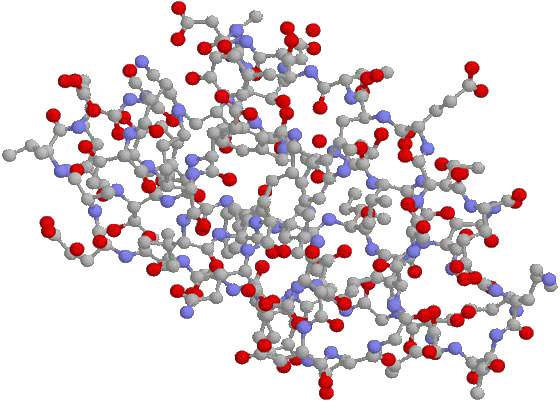macromolecule

A molecule of glucose.
A macromolecule is a very large molecule such as a protein, polysaccharide, nucleic acid, or lipid. Macromolecules have a high relative molecular mass (molecular weight) and a structure which essentially comprises the multiple repetition of units derived, actually or conceptually, from molecules of low relative molecular mass. They are generally carbon-based and often of biological importance.
Macromolecules, are essential for life as we know it. They are made up of smaller units called monomers that are linked together through chemical bonds to form a larger, more complex structure.
Proteins are one of the most important large molecules in the body. They are composed of chains of
Nucleic acids, such as DNA and RNA, are also large molecules that play a critical role in the body. These molecules contain the genetic information that is passed down from one generation to the next. DNA contains the genetic code that is used to make proteins, while RNA helps to transfer that information from the DNA to the protein-making machinery in the cell. Carbohydrates are another important class of large molecules. They are made up of simple sugars, or monosaccharides, that are linked together to form more complex structures. Carbohydrates are an important source of energy for the body, as well as playing a role in cell signaling and communication. Lipids are a diverse group of large molecules that are characterized by their hydrophobic, or water-repelling, properties. They include fats, oils, and waxes, as well as compounds like cholesterol and phospholipids. Lipids play a variety of roles in the body, including energy storage, insulation, and cell membrane structure. Large molecules are not only important for the body, but also for the environment. For example, cellulose is a large molecule that is found in the cell walls of plants. It provides structural support and helps to maintain the shape of the plant. Another example is chitin, a large molecule that is found in the exoskeletons of arthropods like insects and crustaceans. Chitin provides strength and protection, as well as helping to prevent water loss.


